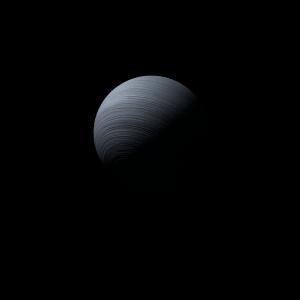|
|
Space Astro
|
Info for exoplanet "Tebyobo Byo"
| Scientific (actual) data |
|---|
| Name | OGLE-2013-BLG-0132L b |
| Planet status | Confirmed |
| Planet mass | 0.26 |
| Semi major axis | 3.14 |
| Discovered | 2017 |
| Updated | 2024-02-01 |
| Publication | Published in a refereed paper |
| Detection type | Microlensing |
| Mass measurement type | Microlensing |
| Star name | OGLE-2013-BLG-0132L |
| Right ascension | 269.77° |
| Declination | -28.42° |
| Star distance | 3900 |
| Star mass | 0.54 |
| Star alternate names | MOA-2013-BLG-148 |
| Wikipedia article | OGLE-2013-BLG-0132L b |
Back
| |
| Fictional info (?) |
|---|
| Suggested name | Tebyobo Byo |
| Planet type | Cold gas giant |
| Its orbital period around OGLE-2013-BLG-0132L of @ORBITALPERIOD earth days is the longest of all the planets in its solar system.
The planet telescopically displays the complete range of phases, similar to Venus and the Moon, as it moves in its inner orbit relative to OGLE-2013-BLG-0132L, which reoccurs over the so-called synodic period approximately every 75 days.
Having almost no atmosphere to retain heat, it has surface temperatures that vary diurnally more than on any other planet in its solar system, ranging from 150°K (-123°C) at night to 945°K (672°C) during the day across the equatorial regions.
It was the one of the first exoplanets visited by a spacecraft, and one of the first to be successfully landed on.
The smooth Borealis basin in the northern hemisphere covers 19 percent of the planet and may be a giant impact feature.
The two polar ice caps appear to be made largely of dust.
One of this planet's pleasant moons is said to have unreliable ultra advanced carnivores that feed scattered in groups by killing the somewhat smaller "Amuhyage" if they need to. Hyuhobi are somewhat related to Byugya-miho and have fur and vary in length from 9 to 22 cm. They are able to thrive at temperatures from 30 to 120°C and predators attacking which is rare on this planet. |
| Estimated population | 40000000 |
| Atmosphere | Methane | 87% |
| Water | 7% |
| Carbon dioxide | 4.1% |
| Oxygen | 1% |
| Atmospheric pressure | 16 bar |
 |
| Moon | Joko-puya Zagu | Medium-sized almost round oceanic planetoid |
| Google search for Tebyobo byo |
|
Website by Joachim Michaelis
|
|
|
|